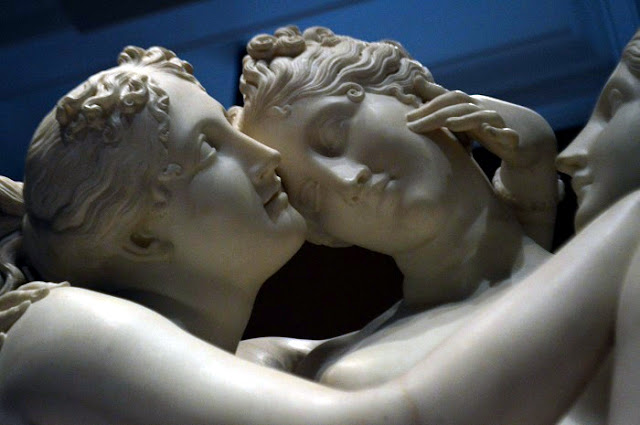The Three Graces
The Graces are, by
tradition, the three daughters of Jupiter/Zeus: Thalia (youth and beauty), Euphrosyne
(mirth), and Aglaia (elegance). This group was commissioned by John
Russell, 6th Duke of Bedford, when he visited the studios of Antonio Canova in Rome
in 1814. There Russell saw and was, justifiably, taken with a version of The
Three Graces (now in the Hermitage, St Petersburg) commissioned for Empress Josephine,
the former wife of Napoleon Bonaparte. As she had died earlier that year, the
Duke made an offer on the piece, but was thwarted by her son, who claimed
ownership. Not to be done out of a sculpture, Russell commissioned Canova to
produce a second version which was completed in 1817 and installed at Woburn
Abbey, Bedfordshire in 1819.
One of the reasons I
love this piece is the sheer skill demonstrated by Canova. His working technique
was to dictate the design and then allow his workers to carve out the broad
shapes, saving the final level of detailing for himself. This is what set him apart
from his contemporaries and led to comparisons with the finest sculptors of antiquity
– Canova could make solid, cold marble look as though it was as warm and
responsive as human flesh. I’ve spent so much time with this piece, looking at
how an individual figure balances within the group or how the artist renders the
touch of fingers on a face. It is truly spectacular and never fails to take my
breath away.









Comments
Post a Comment